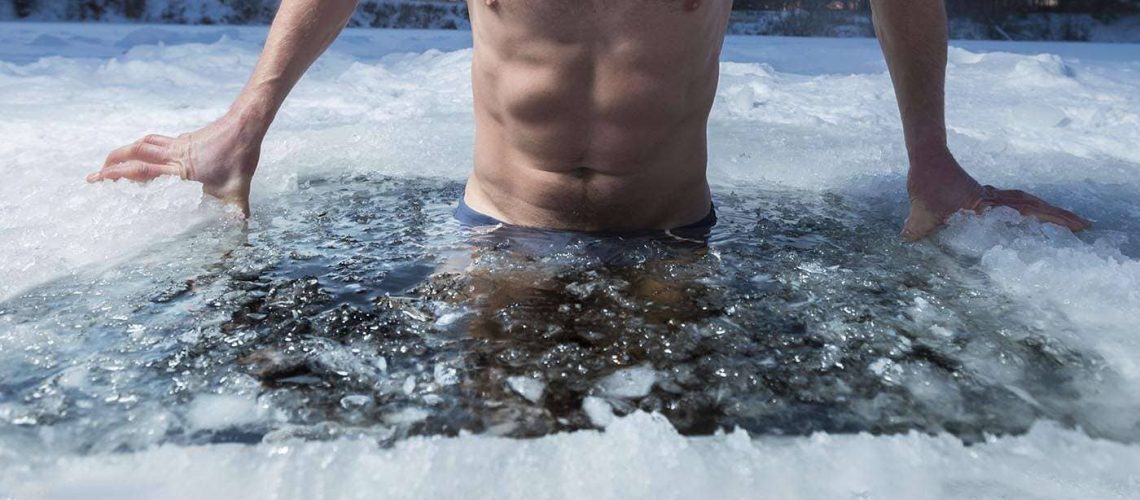Cold plunging therapy is taking the wellness world by storm as more people realize its transformative effects on the body and mind. We’re diving headfirst into icy waters to explore the ins and outs of cold water immersion — including its wide-ranging benefits, ideal plunge durations, the interplay between hot and cold therapies, and why a cold plunge trumps an ice pack for recovery.

Popularized recently by the “Iceman” Wim Hof, cold plunging therapy involves immersing the body in cold water (50 to 59 degrees Fahrenheit is optimal) for a short period of time, typically ranging from a few seconds to a few minutes. You’ve probably heard of professional athletes taking ice baths as part of their recovery routines, but the truth is — cold therapy is for everyone.
H2 Unlocking the Benefits of Cold Water Immersion
The shock of the cold water stimulates physiological responses within the body that trigger a cascade of positive effects.
- Enhanced Circulation and Immune Function
Cold water immersion stimulates vasoconstriction, which causes blood vessels to contract and boosts blood flow throughout the body. Better circulation helps move vital nutrients and oxygen to muscles and organs, which improves immune function and athletic performance.
- Mental Wellness and Stress Relief
The shock of the cold triggers the release of endorphins, the body’s natural “feel-good” hormones. Most people experience an immediate mood boost after cold water exposure, which helps ease mental and emotional struggles like anxiety, depression, and stress. Even better — consistent cold plunging can raise your resilience to stress so it’s easier to maintain mental clarity in the face of future challenges.
- Muscle Recovery and Reduced Inflammation
Athletes and fitness junkies cold plunge all the time to promote muscle recovery and train more effectively. The cold water reduces inflammation by constricting blood vessels and brings down swelling in overworked muscles.
H2 Optimal Duration for Cold Plunging
A general guideline for cold plunging is to start with shorter periods and gradually increase the time as your tolerance grows. Most people experience the desired benefits within a range of one to five minutes.
Data shows 10 to 15 minutes of exposure per week is a solid goal to strive for, which can be split between multiple sessions. Stanford neuroscientist Andrew Huberman suggests 1-5 minute cold sessions 2-4 times on a weekly basis.

Many recovery venues offer a combination of hot and cold therapies, such as hot tubs and saunas alongside cold plunges. Alternating between hot and cold temperatures can maximize the benefits to your body. Heat therapy helps relax muscles and improve blood flow, while following it up with a cold plunge enhances the effects of vasoconstriction and vasodilation, promoting better circulation and reducing inflammation throughout the body.
H2 Is an Ice Pack as Good as Cold Plunging?
Ice packs have their place in acute injury management, but since their application is localized to the injured area they don’t trigger the comprehensive physiological response like cold plunges. By stimulating circulation, promoting mental well-being, aiding muscle recovery, and reducing inflammation throughout the body, cold plunges help heal the whole body at once.
H2 Athletes Who Cold Plunge
Cristiano Ronaldo, Usain Bolt, Naomi Osaka, and Lebron James are all big believers in cold water therapy. On Nike’s Trained podcast, James and his longtime trainer Mike Mancias revealed his secret recovery regimen:
“Either pre-game or post-game, pre-practice or post-practice. It consists of a hot tub or a cold tub, or an ice tub (and) a hot shower—on the road, you have to be resourceful. The basics of it is starting hot for five minutes, (next) you go to cold for five minutes, then you do about three cycles of that.” — Mike Mancias

H2 Conclusion
At the Juglife Foundation, we’re all about harnessing the incredible potential of water to enhance our well-being. The therapeutic effects of cold plunging prove water is more than a source of hydration — it’s a multifaceted resource that can positively impact all areas of our lives.
We’re stoked to see cold plunging take off for its potential to help individuals of all ages enhance circulation, overcome injury, improve mental health, and boost resilience. The next time you’re feeling stressed or sore? Try taking the plunge to get your body back in balance.
